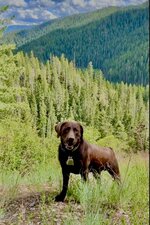Looking for some advice - will be hunting archery elk and mule deer in an area that is primarily in the 7500-9500' elevation range in late September. Mostly there for elk but will be glad to chase muleys if given the opportunity. Fortunately it's a draw tag but the drainages we'll have at our disposal will likely be pressured and the glassing points are either atop steep mountains or don't give you a wide purview of the area as conifers or aspen groves are everywhere. Further, the "good" looking meadows are mostly near well established hiking trails. Hunting with my longtime hunting partner and and have a third tagging along for the camaraderie (he's been on an elk hunt before as well). We've driven the area and are semi-familiar from the truck but mostly going in blind since we've never actually hunted it. The local herd is supposedly strong but this will be year 3 with the previous 2 lacking success (for elk). We've always had good luck with deer and had some encounters with elk but they are elusive creatures (have always hunted OTC units).
I've been struggling to establish a game plan and hoping for some tips to help save time wandering from e-scouted spot to e-scouted spot. We have 8 or 9 days to hunt so time isn't an issue and we're used to being mobile. As much as I'd love to hike deep and set up a basecamp, it's unlikely to be a productive method for hunting as most areas are 3-4 miles or closer to roads. The elevations range from gentle at lower altitudes (7,000-8,000') to rather aggressive (8,000+). I think the general grade in the area contributes a lot to the numerous pine in the area.
I'm a deer magnet, but I'll admit, I am not a good elk "finder". I think all the TV shows and youtube videos I've watched have tainted my skillset. My first thought going into any elk hunt is to find glassing points but I've been reconsidering lately, especially considering the dense nature of the forest. The area we're hunting has a lot of good looking areas, like watering holes and feeding areas, but they are small "pocket" spots. I hate to trudge through an area blindly and without the ability to distance myself from game, but is there a better way to go about finding wildlife in a more forested area? Should I be approaching this more like turkey hunting, trying to listen for bugles, sort of quickly still hunting through the good spots? I often get hung up on hunting high early in the season - I know elk are where you find them but I can't help but think to start high. Might buy the elk 101 course this year to try and find some additional tips. Have studied this for years but still struggling! Appreciate your input as always, this forum has been a great resource and I greatly enjoy reading the variety of experiences and wisdom of others. Interested to hear your thoughts.
I've been struggling to establish a game plan and hoping for some tips to help save time wandering from e-scouted spot to e-scouted spot. We have 8 or 9 days to hunt so time isn't an issue and we're used to being mobile. As much as I'd love to hike deep and set up a basecamp, it's unlikely to be a productive method for hunting as most areas are 3-4 miles or closer to roads. The elevations range from gentle at lower altitudes (7,000-8,000') to rather aggressive (8,000+). I think the general grade in the area contributes a lot to the numerous pine in the area.
I'm a deer magnet, but I'll admit, I am not a good elk "finder". I think all the TV shows and youtube videos I've watched have tainted my skillset. My first thought going into any elk hunt is to find glassing points but I've been reconsidering lately, especially considering the dense nature of the forest. The area we're hunting has a lot of good looking areas, like watering holes and feeding areas, but they are small "pocket" spots. I hate to trudge through an area blindly and without the ability to distance myself from game, but is there a better way to go about finding wildlife in a more forested area? Should I be approaching this more like turkey hunting, trying to listen for bugles, sort of quickly still hunting through the good spots? I often get hung up on hunting high early in the season - I know elk are where you find them but I can't help but think to start high. Might buy the elk 101 course this year to try and find some additional tips. Have studied this for years but still struggling! Appreciate your input as always, this forum has been a great resource and I greatly enjoy reading the variety of experiences and wisdom of others. Interested to hear your thoughts.

